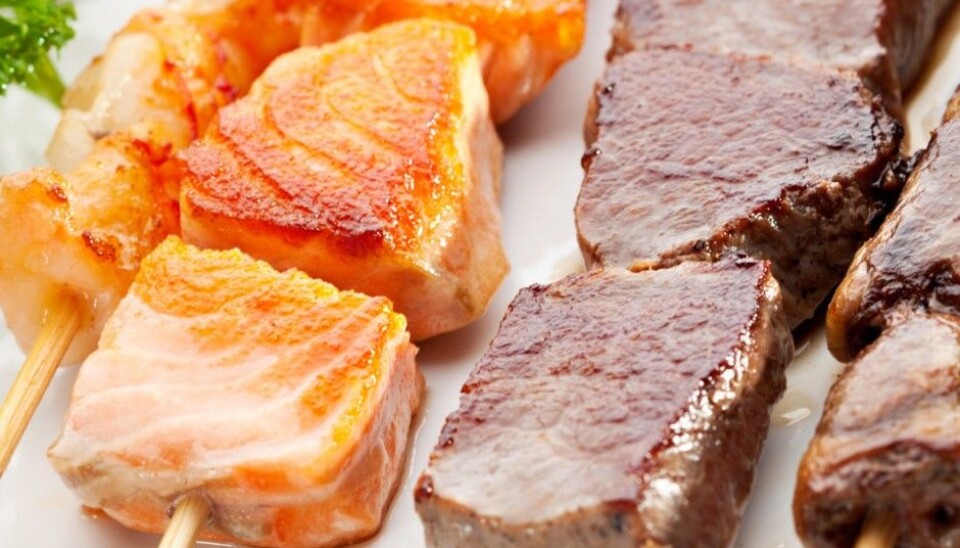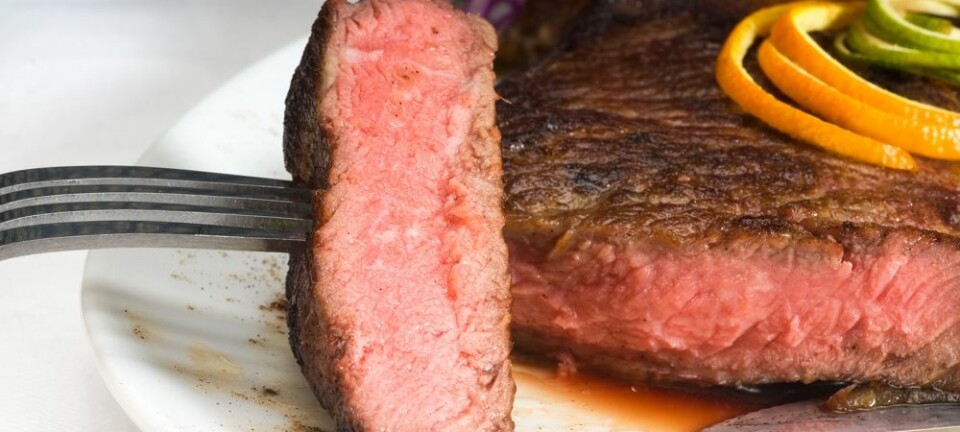
Red meat not such a bad thing to eat?
A Norwegian study indicates that the iron in red meat might represent a smaller risk for colon cancer than believed. Surprisingly for many, polyunsaturated fats can also create harmful substances in the intestines.
There are strong indications that red meat consumption raises the risk of cancer in the colon and rectum. This conclusion is internationally accepted, as evidenced by warnings from the Norwegian National Nutrition Council in 2011 after evaluating loads of research material on the subject.
One possible explanation is that red meat is especially rich in iron. So-called heme iron can make fat molecules react with oxygen, i.e., to oxidise. This in turn can promote the formation of potentially genotoxic substances – aldehydes. Genotoxic chemical agents damage genetic information and can cause harmful mutations, and cancers.
Scientists at the Norwegian University of Life Sciences (NMBU) and the food, fisheries and aquaculture research institute Nofima have used an artificial stomach and small intestine to look into a simulated digestion of beef, pork, chicken and salmon.
The results were not as expected.

It turned out that both salmon and chicken created more harmful compounds than red beef.
Polyunsaturated fats with a sting
“This was unexpected,” says Christina Steppeler, a research fellow at NMBU and one of the researchers behind the study.
“We had expected to find a higher concentration of these substances coming from beef.”
But the chicken and the salmon – which contain much less iron – created more of the harmful substances. Especially the salmon.
Steppeler and her colleagues think the fats in these foods are key factors.
The more polyunsaturated fats the foods contained, the more of these genotoxic substances were created in the digestive process. These potentially harmful compounds were made by the oxidation of the fats.
Two other recently published studies also point to fats as important factors in this context.
It could be that the combination of quantities of iron and polyunsaturated fats is unhealthy. The combination of minced beef and fish oil with lots of unsaturated fat created the highest levels of aldehydes in the experiment.
But what this really means is not evident.
Reality could be different
An artificial intestine in a laboratory can provide essential insights about what happens in our guts, but it is by no means the complete picture.
For example, a living intestine will react to all the contents of a meal by secreting larger or smaller amounts of bile salts or by regulating the speed by which the stomach passes on food.
Also, real persons rarely eat only eat meat and fish.
“It might be that the result differs with an entire meal. For instance, antioxidants can also hinder the oxidation of fats. So if you eat broccoli or other vegetables along with the meat or fish, this can provide protection,” says Steppeler.
Fish is still healthy
She stresses that the results do not mean that people should shy away from fish. Many studies have shown that the oil in salmon can have a healthy effect.
Nor is it even certain that the increased formation of these genotoxic aldehydes really has an impact on the development of colon cancer in humans.
On the other hand, the study does not write red meat off as a possible cause of cancer.
“There are many factors that impact the risk of cancer. It’s uncertain whether we have found the substances yet that do the harm,” says Steppeler.
She does think the results should act as an impetus for more research.
An impact on nutritional advice
“We’ve started a study with mice that are being fed with meat and fish to see what effect the compounds have on living organisms.”
The researchers will be looking to see which substances are formed in the mice’s digestive tracts and whether they form tumours. The results are not in yet.
Steppeler and her colleagues think the facts accumulated to date should be taken into account when the Norwegian National Nutrition Council hammers out new advice on the consumption of fats.
“As regards cardiovascular diseases, it’s considered a health benefit to switch from saturated to polyunsaturated fats, and the nutritional advice encourages this. The results of this study show, on the other hand, that high levels of unsaturated fats can cause an increased formation of harmful substances in the intestines,” state the scientists.
Shouldn’t jump to conclusions
Kjetil Retterstøl is a professor at the Division of Clinical Nutrition at the University of Oslo and a member of the Norwegian National Nutrition Council.
He says this study alone will not be having any consequences for the dietary advice the council will be issuing.
“Hundreds of articles in the field of basic dietary research come in every week. We do not continually take individual ones into account unless they are really ground-breaking,” he says.
Apparently he thinks this one is not so transformational. Retterstøl says that nutrition is a very complicated field of research. He is not surprised that Steppeler’s study indicates that polyunsaturated fats can form harmful substances other than unhealthy fat.
It’s well known that polyunsaturated fats react more readily with oxygen than saturated fats. But we also know that the body needs polyunsaturated fats.
“Like we so often say: A sensible balance is required,” says Retterstøl.
He warns against drawing conclusions about the correct balance of types of fats in our diets on the basis of individual studies, such as this one by Steppeler and her colleagues.
“We can’t issue dietary advice on the basis of this result,” he says.
“This study is currently just a single element of basic research. Time will tell what becomes of it.”
-------------------------------------------
Read the Norwegian version of this article at forskning.no
Translated by: Glenn Ostling




































